71st Kisei Match Game 4
Black: Tanigawa Koji, Kisei
White: Habu Yoshiharu, Challenger
71st Kisei-sen, Game 4, July 18th 2000
1.P7g-7f 0/0 0/0
2.P3c-3d 0/0 2/2
3.P2g-2f 2/2 0/2
4.P8c-8d 0/2 1/3
5.P2f-2e 1/3 0/3
6.P8d-8e 0/3 1/4
7.G6i-7h 0/3 0/4
8.G4a-3b 0/3 1/5
9.P2e-2d 1/4 0/5
10.P2cx2d 0/4 0/5
11.R2hx2d 0/4 0/5
12.P8e-8f 0/4 0/5
13.P8gx8f 0/4 0/5
14.R8bx8f 0/4 1/6
15.R2dx3d 1/5 0/6
Habu is not in a position to vary the opening much, as he must win this game
to stay in the match. Just like in the third game (which he won), he plays
the Yokofudori.
16.B2b-3c 0/5 3/9
17.R3d-3f 8/13 0/9
18.S3a-2b 0/13 2/11
19.G4i-3h 4/17 0/11
20.K5a-4a 0/17 4/15
21.K5i-5h 3/20 0/15
22.S7a-6b 0/20 1/16
23.B8hx3c+ 16/36 0/16
This early bishop exchange is to avoid the popular R8e variation.
24.N2ax3c 0/36 2/18
25.S7i-8h 0/36 0/18
26.R8f-8b 0/36 32/50
27.P*8g 3/39 0/50
28.P5c-5d 0/39 4/54
29.S3i-4h 6/45 0/54
30.G6a-5a 0/45 7/61
31.S8h-7g 26/71 0/61
32.P7c-7d 0/71 11/72
33.P1g-1f 10/81 0/72
34.P5d-5e 0/81 39/111
35.P1f-1e 21/102 0/111
36.R8b-8d 0/102 17/128
Subtle play, as this rook was first pulled back to 8b. A loss of a move, but
having the rook here is more important. It is a strange feature of shogi
that even though black seems to have played all the natural moves, it is
white who comes out of the opening on top. He has a natural attack in
N7c~P7e~N6e, while black is stuck for moves.
37.R3f-2f 14/116 0/128
38.N8a-7c 0/116 4/132
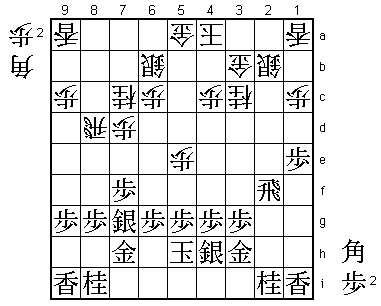
39.S7g-6f 42/158 0/132
Tanigawa thought long and hard about 39.P1d, but after the wild variation
40.Px1d P*1b Lx1b B*2a B*4e P4f B3d R2d B2c Rx2c+ Sx2c P*2d R*2b Px2c+
Rx2a +Px3b Kx3b black has lost material and it is also hard to defend on
the second file without pawns in hand.
40.P7d-7e 0/158 15/147
41.P7fx7e 1/159 0/147
42.P9c-9d! 0/159 1/148
This simple move requires top level positional judgement. Habu has seen that
every move Tanigawa can play will only weaken his position. Forcing his
opponent to move increases his advantage. Of course, this pawn also
aims for a nasty edge attack.
43.N2i-1g 22/181 0/148
44.P9d-9e 0/181 20/168
45.R2f-2i 7/188 0/168
46.P*2g 0/188 31/199
47.S6fx5e 3/191 0/199
48.P9e-9f 0/191 6/205
49.P9gx9f 0/191 0/205
50.P*8f 0/191 2/207
51.P8gx8f 5/196 0/207
52.R8dx8f 0/196 1/208
53.S5e-6f 1/197 0/208
54.P*9h 0/197 3/211
55.L9ix9h 14/211 0/211
56.B*5d 0/211 2/213
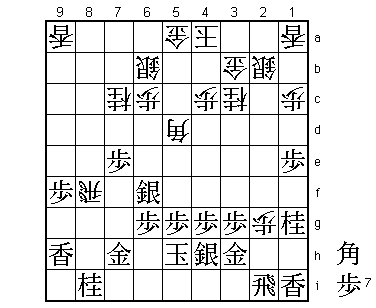
Now the white advantage is clear. Black can no longer defend the right side
of the board accurately. 57.S7g R8d does not help black. Tanigawa has made
no obvious mistakes so far and the post mortem analysis also did not reveal
any clear problem. It seems that there is something wrong with the black
opening development.
57.P7e-7d 12/223 0/213
58.B5dx9h+ 0/223 10/223
59.P7dx7c+ 0/223 0/223
60.S6bx7c 0/223 0/223
61.P*8g 0/223 0/223
62.+B9hx8g 0/223 8/231
63.G7h-7g 7/230 0/231
64.+B8gx7g 0/230 4/235
65.S6fx7g 0/230 0/235
66.R8f-8g+ 0/230 0/235
67.S7g-6h 13/243 0/235
68.S7c-6b? 0/243 18/253
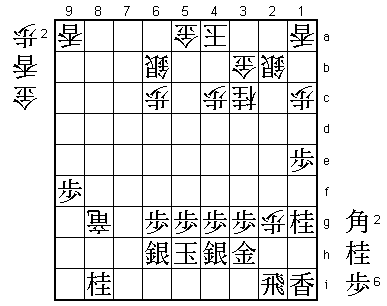
A natural looking move, but a mistake that gives black hope. After 68.G*7h
instead, white would have won easily.
69.P*7c 4/247 0/253
70.P*7g 0/247 3/256
71.B*6e 2/249 0/256
72.+R8g-8h 0/249 11/267
73.B*9g 2/251 0/267
74.+R8h-8e 0/251 1/268
75.N8ix7g 0/251 0/268
76.+R8ex9f 0/251 0/268
77.P*9h 1/252 0/268
78.P*7f 0/252 4/272
79.P7c-7b+ 2/254 0/272
80.P7fx7g+ 0/254 0/272
81.S6hx7g 0/254 0/272
82.N*8e 0/254 1/273
83.+P7bx6b 17/271 0/273
84.G5ax6b 0/271 0/273
85.N*5d 0/271 0/273
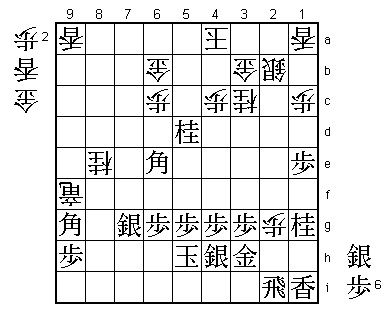
With active use of both bishops, black has chased the dragon out of his
position. It is unfortunate for Tanigawa that white can just survive. Here
85.N*2d looks very good, but after 86.L*6d Nx3b+ Kx3b S*3d Lx6e G*4b K2a
Rx2g Lx6g+ K4i N*2f defends against the black mate with a mating threat
of his own and still wins.
86.G6b-5b 0/271 1/274
87.R2i-8i 5/276 0/274
88.L*6d 0/276 4/278
89.B6e-7d 5/281 0/278
90.+R9fx9g 0/281 6/284
91.P9hx9g 0/281 0/284
92.N8ex7g+ 0/281 0/284
93.S*6a 3/284 0/284
94.G5b-5c! 0/284 8/292
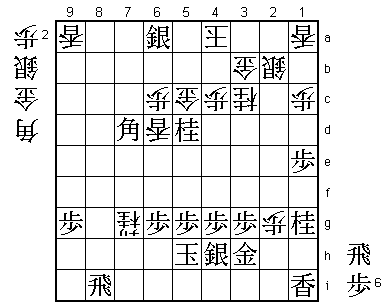
For the past couple of moves, Habu's hand was visibly shaking when he made
his moves. However, the pressure was not affecting his endgame power in the
least. Here he used only 8 minutes to secure the win by this simple looking
move. Hard to see for mere mortals, but this gold defence is actually a
mating threat. For example, 95.S7b= +Nx6g K4i +N5h K3i G*2h Gx2h Px2h+ Kx2h
P*2g Kx2g P*2f Kx2f B*4d followed by taking the piece that black drops on
3e and advancing the gold on 5c to 4d.
95.K5h-4i 7/291 0/292
This must have been a long 7 minutes for Tanigawa. He has found no way out
and turns to defence without any hope of survival.
96.+N7gx6g 0/291 1/293
97.P*6e 4/295 0/293
98.S*2i 0/295 2/295
99.P*2h 2/297 0/295
100.B*1f 0/297 0/295
101.P2hx2g 0/297 0/295
102.P*2f 0/297 0/295
Resigns 0/297 0/295
Time: 04:57:00 04:55:00
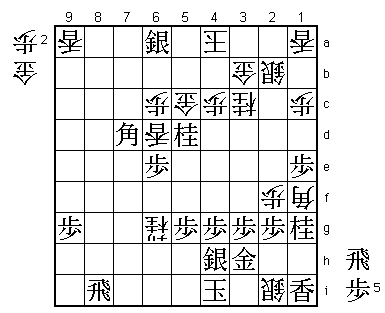
The bishop on 1f works very well. Black has no defence and Tanigawa has no
option but to resign. The decisive fifth game will now decide whether Habu
will get his fifth crown or Tanigawa will become Lifetime Kisei. Unlike the
Meijin match, both players might hope that the furigoma will give them the
white pieces. All four games in this Kisei match have been won by white
so far...





